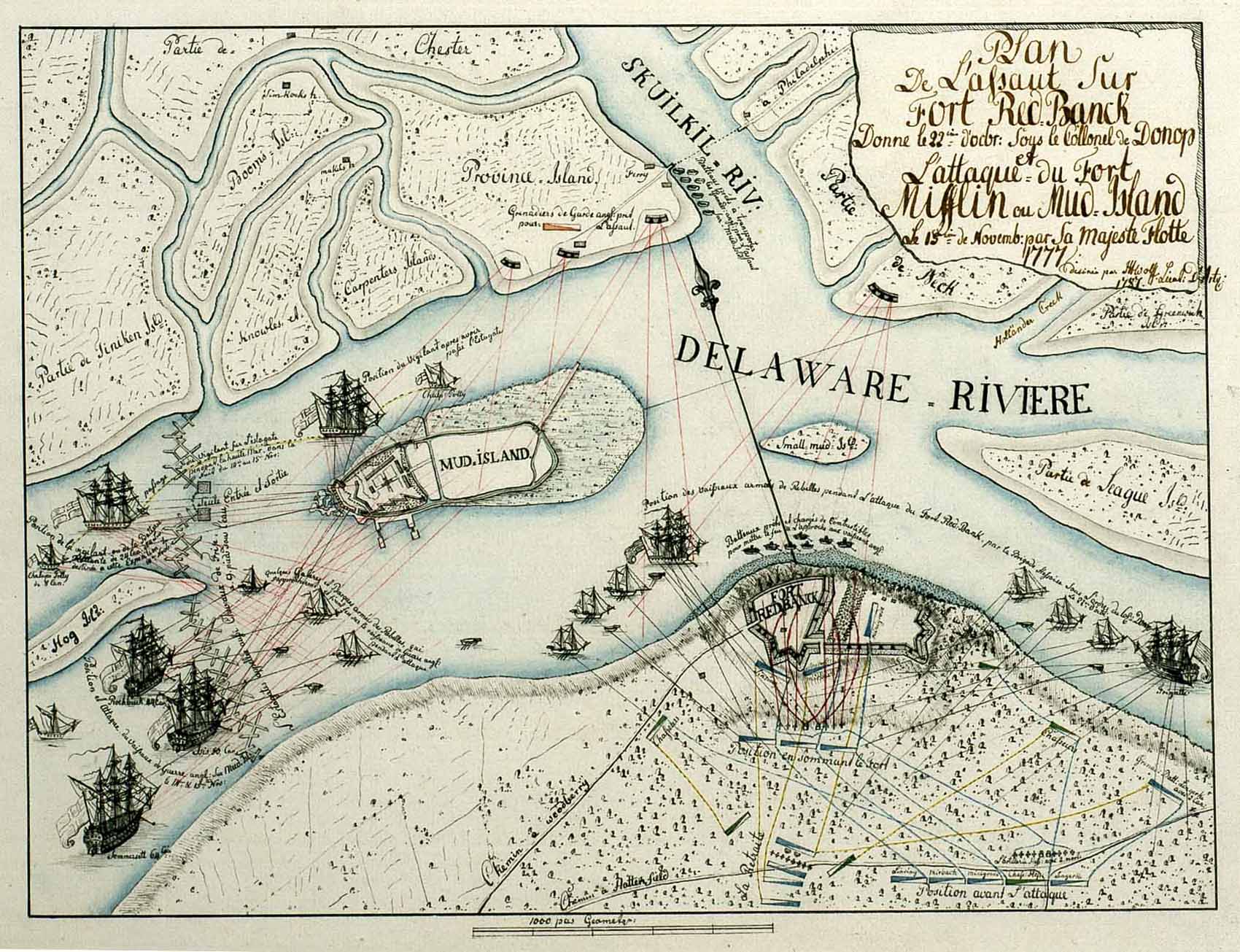But to compare them is to understand each man better, and to understand the war better—so hard to do now, when it is so long ago and far away in time, technology, and myth-making.

Here is the action at Fort Mifflin, side by side:
| Waldo November 10 After describing the turn of fortune experienced by Captain Nichols, caption of an English packet captured at New Castle, Waldo notes, “An incessant cannonading at or near Red Bank this day. No salt to eat dinner with. November 11, 12, 13, & 14—Nothing material happened. |
Greenman M 10. this day the Enemy set out a new, resolving if posable to reduce the fort, knowing if it was nor done they would be obliged to evacuate Philadelphia, [they] opened three more batteries upon it & keep up an incessant fire on the Fort, all the palisades where broken dow[n], the Diches filled up with Mud by the strong tides, Capn. Treet, who distinguished himself by his bravery, and his Lieut, was killed / the Garrison exhausted & almost reduced. T 11. this morn cule / We burst an eighteen pounder which was got from the wreck of the agusta, and killed one Many & by the Scales & peaces of the Carriage Eighteen More where slightly wounded— W. 12 Colo. Smith was wounded and went out of the [fort] with the old Garrison, being relieved by Major Thare [Thayer] with sum of our men, the Enemy now began to doubt the promises of their Engineer Montresor who had constructed the Fort & had bosted at the beginning that he would reduce it in a few days… |
Greenman, uneducated, a sergeant, has a different set of responsibilities than Waldo, and a in every sense, a different position. He seems unlikely to have agreed with Waldo’s estimation that “Nothing material happened” those days in November, 1777.
~Kirsten Hammerstrom, Director of Collections
You can read Greenman’s published diary, Diary of a common soldier in the American Revolution, 1775-1783 : an annotated edition of the military journal of Jeremiah Greenman by Robert C. Bray and Paul E. Bushnell (DeKalb, IL: 1978) in the RIHS Library. Waldo’s diary was published in the Pennsylvania Magazine of History and Biography, Volume 21 No. 3, 1897, now available free through JSTOR. The Map of the American Fortifications on the Delaware is one of the Revolutionary War Era Maps available through the West Jersey History Project.

2 thoughts on “Soldiers’ Winter”